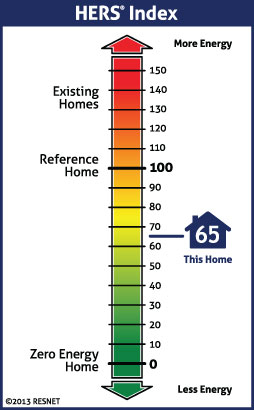
Image Credit: RESNET
Building a more energy-efficient home can employ many different approaches. The builder can use more insulation and better windows, install ductless heating and cooling systems, orient the house to collect sunshine through the windows in winter and shade them in summer, seal leaks in the walls and ceilings, and assure healthy indoor air 24/7 by providing reliable mechanical ventilation with energy recovery. They can use cool roofs. The list goes on…
Traditional building energy codes and efficiency incentives have focused on promoting one or several of these technologies in an inflexible package, requiring specified amounts of insulation in the floor, walls, and roofs, specified heating and cooling efficiency, and a specified maximum air leakage rate. This prescriptive approach succeeds at improving efficiency at low cost, but does not give credit for energy savings from comprehensive or holistic design strategies. Furthermore, the specific measures promoted within codes and incentive programs change over time, causing uncertainty in the industry.
Builders therefore tend to resist the prescriptive approach because it reduces their flexibility and is more expensive than it needs to be for any given energy efficiency target.
For example, perhaps one of the specified criteria is very expensive to meet for a particular house while another technology that might cost much less could save even more energy.
The Natural Resources Defense Council has been working with builders and building efficiency suppliers, as well as with nonprofit efficiency advocates, to introduce the combination of more ambitious energy goals and more flexible ways of meeting them into building energy codes and other market-based programs.
The cornerstone of these methods is the HERS Index, a home energy inspection and rating method developed by RESNET, a nonprofit standard-setting organization that NRDC has supported since its inception. Markets in energy efficiency can only work if buyers and sellers have the information needed to evaluate energy efficiency in dollars. Long-term transformation of efficient construction practices relies on allowing stakeholders across the new construction industry to compete for overall home performance, not just incremental improvements in individual technologies.
The HERS Index is similar to a miles-per-gallon sticker on a car: it projects energy use compared to a baseline. The baseline score of 100 is based on a house that barely meets the 2006 energy code, while a score of 0 means zero energy use, on net.
More than 20% of new homes were rated in 2017, with an average score of 62, which is impressive considering that few entities provide incentives for such ratings. A score of 62 is some 15% better than the requirements of the most advanced model energy code in America. How much better could we do with financial incentives for the lowest scores?
We hope to find out soon
The Consortium for Energy Efficiency (CEE) — an organization of North American utilities and other efficiency program administrators that supports their members’ work to advance energy efficiency by developing common specifications for efficiency — adopted a specification for efficiency in new homes on January 16, 2018.
This spec is based on the Energy Rating Index (ERI), a generic form of the HERS Index. The ERI provides a consistent signal to home builders about the level(s) of higher efficiency that utilities want. It also allows tangential market actors, such as lenders and appraisers, to compare homes’ overall energy performance against each other.
Manufacturers are more inclined to make higher efficiency products when they know in advance that utilities throughout the North American market will all be promoting the same level of efficiency. By providing a binational market signal, CEE members can cause manufacturers to offer products at higher levels of efficiency than they could justify otherwise. This dynamic applies to new homes, too: last year just 19 companies built 35% of all single-family homes in America.
Housing accounts for one fifth of climate-change-causing emissions, and residential energy accounts for about 4% of household expenditures (almost $2,500 a year, or $75,000 over the life of a mortgage). The CEE specification offers participating utilities the choice of incentivizing one or several levels of efficiency. The mid-range level represents a reduction in energy use of about 40% compared to the energy use of a typical new home that barely meets the state energy code. It could easily save the consumer $500 to $1,000 in annual utility bills.
HERS ratings lead to competition between builders for who can build to the lowest score; however this competition is still restrained by the fact that increased energy efficiency often costs more, and the lending system does not yet recognize the value in determining whether a family qualifies for a mortgage. Utilities frequently address this barrier by offering the builder or buyer a cash incentive for efficiency that compensates for the cost increase. (This approach was also used extremely effectively in federal tax incentives for energy-efficient home construction that were in effect from 2005 to 2012.)
By setting a specification that includes several very ambitious tiers of HERS/ERI scores, as well as more modest options that can work in areas where efficiency is a new idea, CEE is leading the way in harnessing market forces to work in coordination with energy codes to promote continual improvement in home energy efficiency.
David Goldstein is co-director of the energy program at the NRDC. This post originally appeared at the NRDC Blog.
Weekly Newsletter
Get building science and energy efficiency advice, plus special offers, in your inbox.





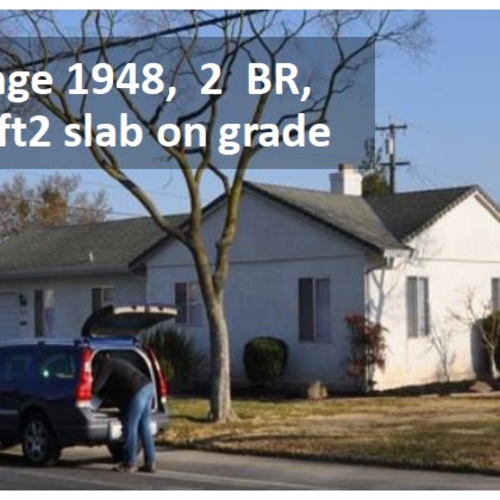
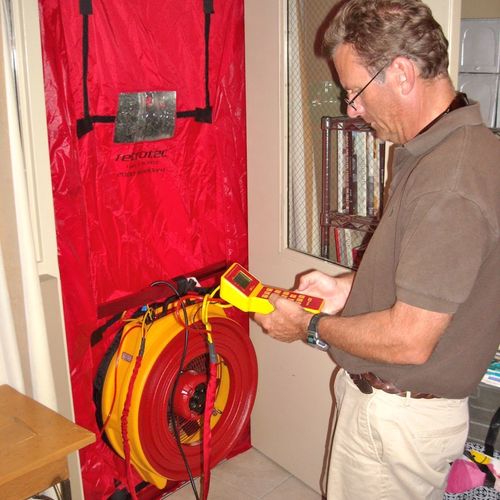
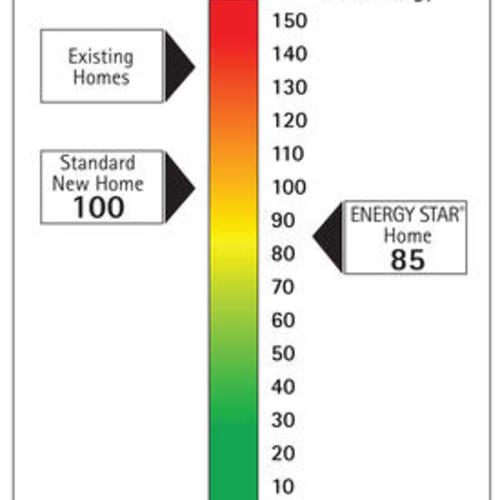
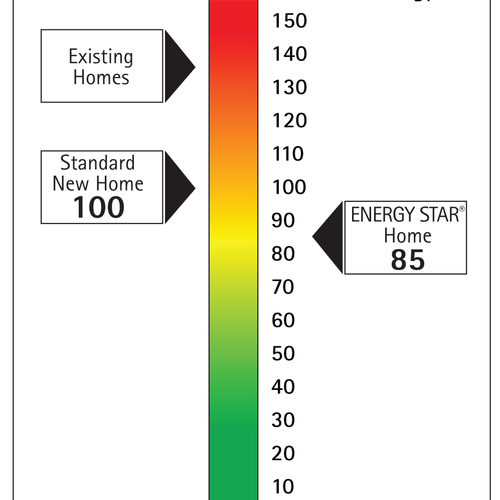






10 Comments
Response to Jon R
Jon,
You're echoing the views of economist William Stanley Jevons, who outlined your argument in his 1865 book, The Coal Question.
For more information on Jevons' insight, see these two articles:
The Jevons Paradox
Getting More Efficient, But Using More Energy
HERS = Money
Here in NH, if your new home achieves the Energy Star 3.0 standard then you get $1,000 from your Power company. VT and other states that use the Energy Star 3.1 version award $1,500 for achieving the standard. On top of that, you get $50 for each point that you beat the HERS target score. The cap is $4,000 total.
We anticipate getting back about $2,500 for our build. This will be perfect for a down payment on a brand new, 12-person hot tub- I mean- more efficient windows...
So the utility will take
So the utility will take money from my smart, green neighbor and give it to me, the bigger polluter!
energy efficiency doesn't matter
It's time to shift from focusing on energy efficiency and move to metrics that involve "green" and/or $.
For example, my house might be more energy efficient than my neighbor's, yet he might produce less greenhouse gases, spend less $/year, put less peak time load on the grid and generate more profit for the utility.
If We Are Talking Green
Embodied energy and carbon offsets need to be in the discussion. Here in the Twin Cities we are having a 3 week long running sequel to "The Shining". Lots of snow and cold, ice dams, snow loads, energy efficiency are all hot topics. Good points made in the GBA article on the ice dam remedy and using recycled rigid insulation. Those of us in the building community need to focus on the truly green solutions.
And yet...
In California the kwh/domestic product has declined and the kwh per capita in California has held pretty steady for 40 years, despite bigger houses, more air conditioning, and a booming economy, bucking the national trends prior to ~2008.
Since 2008 the US as a whole has become much more California-esque, with flat or declining energy use overall, and a shrinking kwh/$GDP.
Efficiency DOES matter, just not a much as program designers might hope.
In the microscopic view efficiency programs will sometimes take Jon R's smart green neighbor's money and give it to the efficient home but energy-pig, Jon R. But from a policy point of view it can still have measurable merit in the aggregate.
Could programs be better targeted, or have more economic-efficiency? Sure. The carbon-tax legislation that keeps getting shot down in WA would probably be more cost-effective (and effective) at achieving the policy goals than ongoing subsidy type programs in that state.
http://www.theolympian.com/latest-news/article202968629.html
I agree, if you really can't
I agree, if you really can't come up with metrics that accurately measure what you want, then some correlated but not accurate metrics can be better than nothing. But let's not forget the goal of accurate metrics.
Rations of our resources
Efficiency improvements in technologies are a hedge against increased consumption by the user. There is a balance in nature, in which the squirrel instinctively gathers enough nuts to survive the winter, but not so many so that it becomes too fat and lazy to be able to gather more nuts. The squirrel that is more efficient in gathering nuts will consume more nuts, but will also be better prepared to survive the winter. This leads to stronger, more resilient squirrels over the course of evolution, potentially leading to an increase in the size of their brains. Just don't eat them.
slim squirrel
Must be one of those trim all season California squirrels. Here in new England, the winter squirrel is a butterball. Fat and Fit
Jevons Paradox
Hammer & Hand did a really nice presentation:
"Who's Afraid of the Big, Bad Jevons Paradox?"
Edit: It seems that I am unable to post any links, so interested people can search YouTube for the title above. Or paste the following suffix into the URL along with the youtube site.
watch?v=exNrjLlhbD8
Log in or create an account to post a comment.
Sign up Log in